Diamond tire chains are your typical types of chains that are constructed with metal chain links that form a diamond pattern. Depending on the amount of snow you encounter, you can change the angle of those diamond shapes in order to increase traction. All of these diamond shapes combined make a metal mesh that surrounds the entirety of the tire and thus increases traction.
Standard diamond tire chains aren’t the easiest ones to mount and take off because they typically don’t always come with self-centering technologies. On the other hand, the benefit of a diamond tire chain is that it offers a higher contact surface with the ground and thus gives you more traction than most other types of chains.
This makes these perfect for areas covered with lots of snow throughout the year.
Cable tire chains represent a more streamlined, lighter, and easier-to-live-with version of the regular diamond tire chain. Even though cable tire chains also create a surrounding area around the tire, they don’t cover the entirety of the tire as effectively as a diamond chain does. Therefore, these chains use smaller links and thinner cables which make it a lot easier to mount and live with these chains.
The drawbacks are that these chains aren’t as effective at providing traction as diamond chains are. This means that these are typically being used for casuals and those who rarely wander into snow-covered areas. They are physically smaller which means that you can always keep them in your trunk without taking any space at all.
What Are Alternative Tire Chains?Alternative tire chains are not chains per se which means that these try to mimic the effects of a chain without being a chain at all.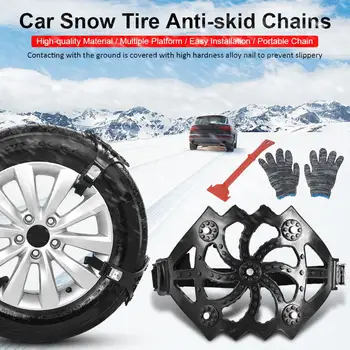 Even though chains do provide the best traction out of all these possible solutions, they can often be awkward and difficult to install. On the other hand, alternative fabric-made solutions can provide you with decent traction while also being really easy to live with and operate.
Even though chains do provide the best traction out of all these possible solutions, they can often be awkward and difficult to install. On the other hand, alternative fabric-made solutions can provide you with decent traction while also being really easy to live with and operate.
Other solutions include even smaller devices that only run through a small surface area of the tire. These do offer better traction but are the easiest to live with, install and take off. Because they are so ergonomic and logical, they can be found across many cars in North America.
Preparation is the key to always having the right tool for the job. Because tire chains can easily damage your tires, your suspension, and even the roads you go over, you need to pick the perfect chain for your car and your driving environment. Investing in a rugged toolbox is also a good idea as you want to be able to organize and keep your chains so they can’t damage anything and can also last a long time.
Tire chains are made to fit specific tire sizes which means that you need to match your tire size with the size of the chain. Some modern chains can even fit different tire sizes, but these do require additional effort to set up properly and typically cost more money in the process. Be sure to familiarize yourself with tire sizing which can easily be seen on the tire sidewall.
You can also write down the tire size code and give it to the clerk at a tire chain store so you don’t have to worry about picking the wrong size. It is imperative for you to go over your owner’s manual and see if there are any limitations or restrictions for your car as far as tire chains are concerned. Different cars come with different wheel well clearance so be sure to be extra careful in that regard.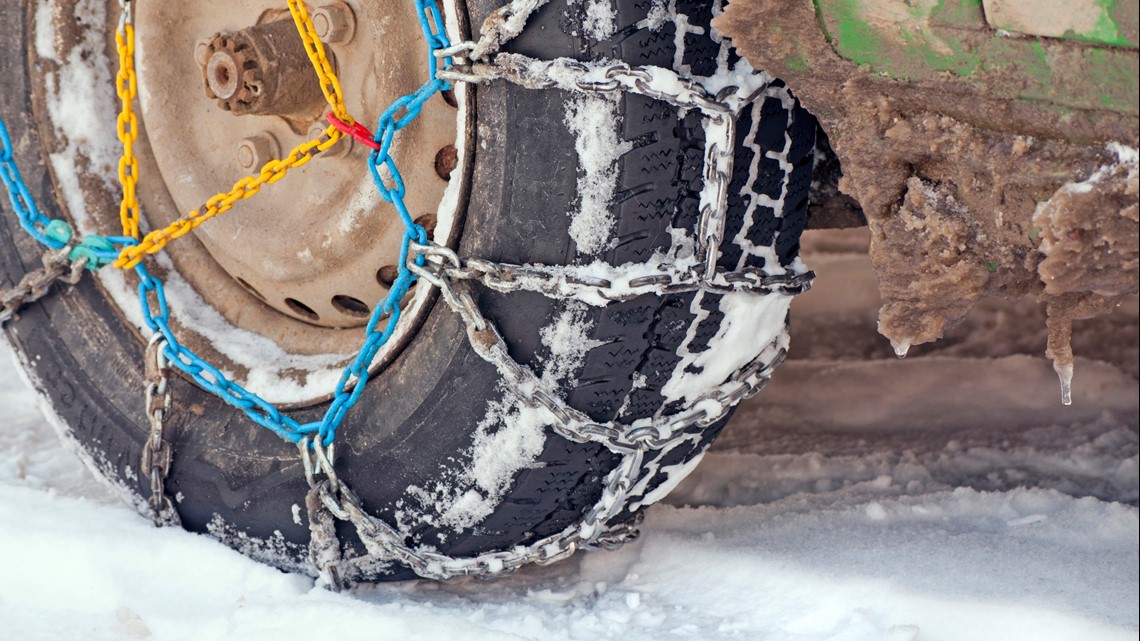
The Society of Automotive Engineers has come up with a system with which we can classify different types of chains in order not to make a mistake while buying them. These classes are separated by the minimum clearance they need in order to be safe and usable. The first class is called “Class S” which refers to cars with smaller wheel well clearances.
This Class is also separated into two groups, first one is Class S A with a minimum clearance of 37mm (1.46”) while Class S B is rated at 15mm (0.59”) between the top of the wheel well and the top of the tire. The second class is “Class U” which also comes with a Class U A iteration with a minimum of 50 mm (1.97”) and a Class U B iteration with a minimum of 23mm (0.91”).
The last class is “Class W” which follows the same principle.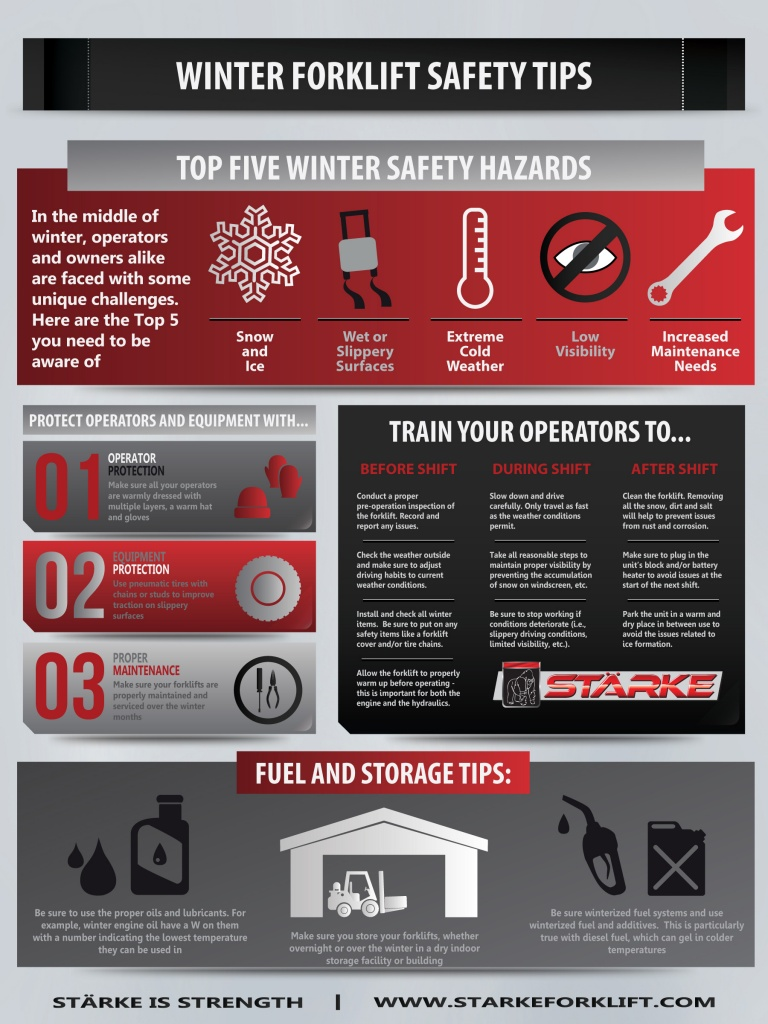 Class W A is measured at a minimum of 63.5mm (2.50”) while
Class W B is measured at a minimum of 38mm (1.50”). There are also many chains out there that aren’t certified with these classes which should be avoided if you don’t have enough experience to know regardless.
Class W A is measured at a minimum of 63.5mm (2.50”) while
Class W B is measured at a minimum of 38mm (1.50”). There are also many chains out there that aren’t certified with these classes which should be avoided if you don’t have enough experience to know regardless.
Tire chains are surprisingly advanced these days which means that they can come with all sorts of features that can help you handle chains a lot easier. Entry-level chains typically don’t come with anything special, besides maybe being able to fit different tire sizes.
More advanced chains come with features such as auto-adjustment in which the chain adjusts itself in place, quick-release mechanisms, drape over tire mechanisms, special titanium-made chains, assisted tensioning, and other similar solutions which make tire chain handling a lot easier but also increase the price by quite a bit.
There is always a possibility that you can damage both your tires and your wheels while carrying chains and there really isn’t a way how you can completely protect your tires.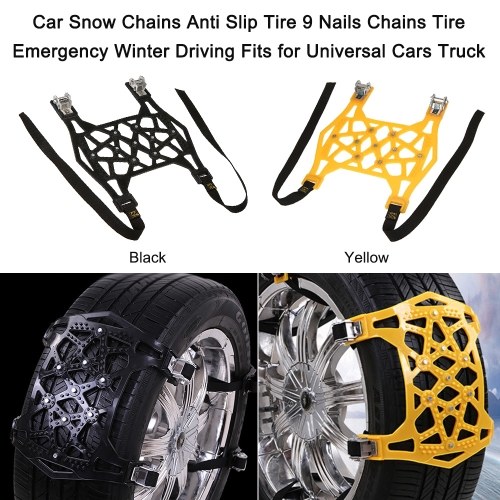 For starters, always use tire chains while driving on a significant amount of snow. Don’t drive your chains in places where the ground isn’t completely covered by snow as road contact can damage your tires and your chains as well.
For starters, always use tire chains while driving on a significant amount of snow. Don’t drive your chains in places where the ground isn’t completely covered by snow as road contact can damage your tires and your chains as well.
You should also keep in mind that tire chains aren’t rated for speeds exceeding 20-30mph in most cases. There are heavy-duty chains out there that are rated for higher speeds, but this will increase the chances of damaging your tires and wheels either way. Always double-check your tire chain fitment and always buy the correct chain size for your tires.
A good idea would always be to buy a separate set of cheap, yet adequate rims on which you can mount your winter tires on. This way you can safely store your shiny, good-looking wheels while your cheap (yet adequate) rims take all the beating.
Yes, different states have different regulations in regards to tire chains which means that you have to have tire chains in some states, but not in all of them. Some warmer states such as California don’t require snow chains, but signs will be posted on certain roads where snow chains are a necessity.
Some warmer states such as California don’t require snow chains, but signs will be posted on certain roads where snow chains are a necessity.
The state of New York requires you to have tire chains whenever a snow emergency has been declared. If you want to know more about your state and all the specifics and special guidelines, click here.
At the end of our “Tire Chains Cost” article, we can easily say that entry-level chains cost between $60-80 for a common small passenger car. More advanced tire chains with special features can easily cost upwards of $200 or even $300. Larger cars with larger tires require larger chains which inevitably cost more money as well.
No matter which tire chain you go for, you need to be sure that it is the right tool for the job. Always double-check all the laws and regulations about tire chains in your state and never use tire chains when they aren’t needed.
If you travel to the mountains or snowy areas regularly, sooner or later you’re going to have to use tire chains.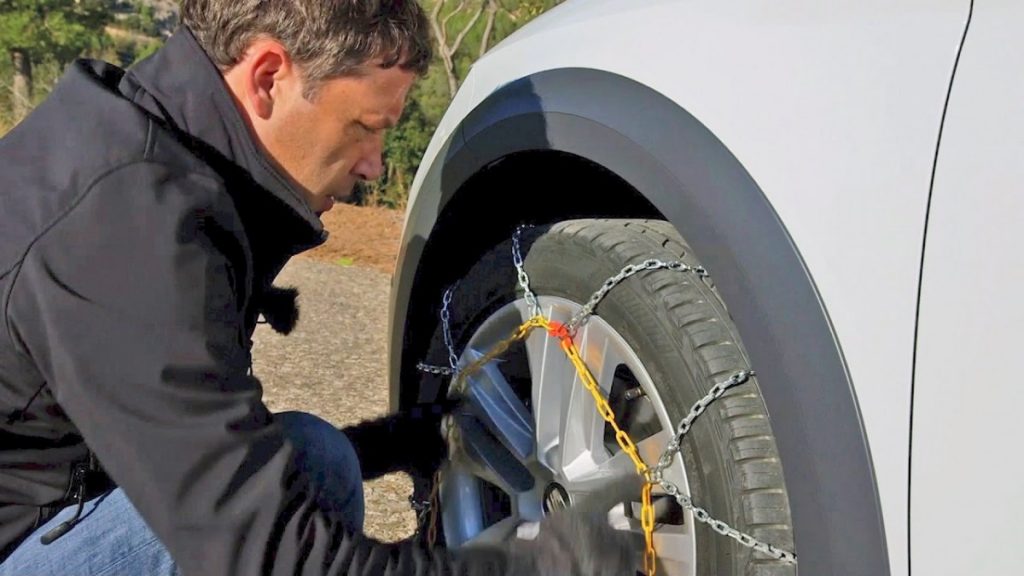 Start by getting the right set for your vehicle at your local Les Schwab.
Start by getting the right set for your vehicle at your local Les Schwab.
Quick-fit chains are not your grandpa’s tire chains. They are MUCH simpler to put on and take off. Here are a video, step-by-step instructions, and driving safety tips for installing quick-fit tire chains on your vehicle.
When you need chains, driving conditions are nasty. Snow is coming down, passing traffic is spraying slush, dirty water is dripping off your wheel wells, the road is slick, and it may be dark. Don’t make this the first time you put on your chains.
Practice installing your new chains once BEFORE you travel. Take advantage of a dry garage or driveway to make sure your winter tire chains are the right size and you’re comfortable putting them on. If needed, the professionals at Les Schwab Tire Centers can help.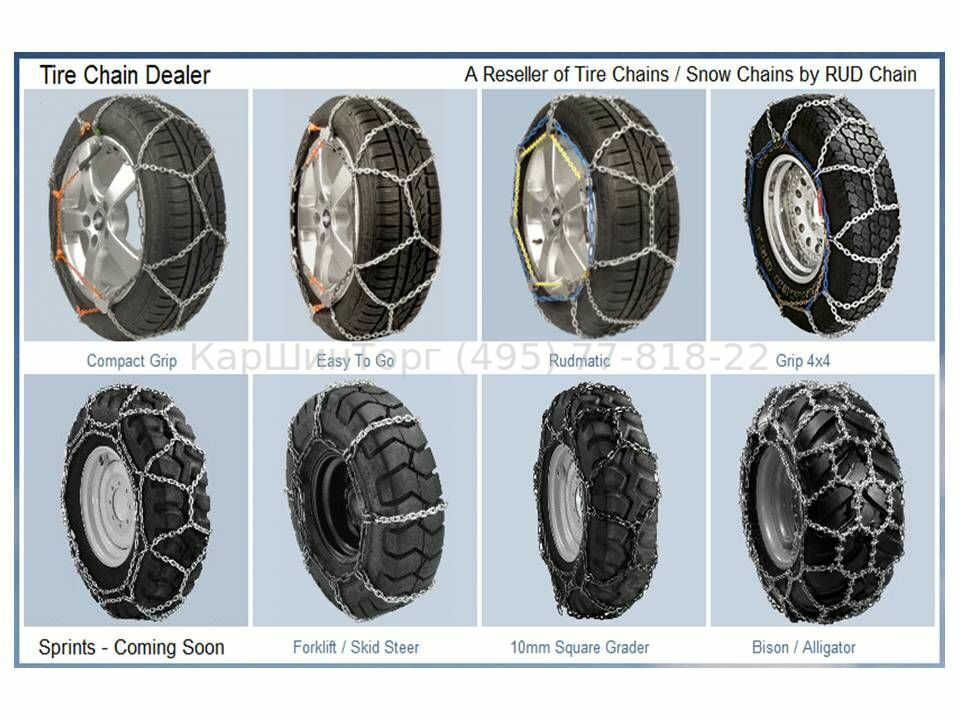
Put together a simple winter road trip safety kit with warm gloves, waterproof layers, and other items to make your winter driving more safe and comfortable. In the winter, always carry this emergency kit and tire chains in your vehicle.
Once you’re comfortable installing your chains, you’re ready to hit the snow.
Be Safe. If you’re on the road, pull off as far as possible onto a safe shoulder. Flip on your hazard lights. Put on your waterproof layers, hat, headlamp, and gloves from your winter road trip kit.
Identify the Correct Tires. If your vehicle is front-wheel drive, the chains go on the front. If it’s rear-wheel drive, chains go on the back. If it’s all-wheel drive, please check your owner’s manual. If you’re not sure, you can ask the experts at Les Schwab for help.
Pull Out Chains & Instructions.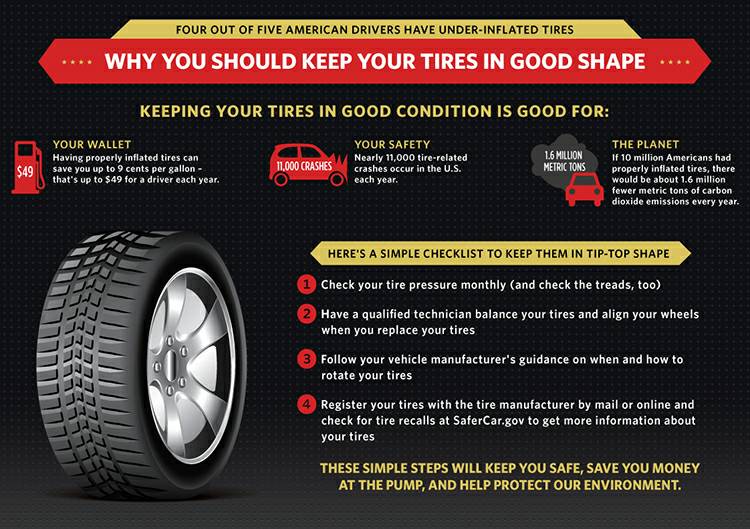 With your vehicle parked, open the bag and pull out your instructions and your first chain. Each bag comes with two chains. The plastic instruction mat that comes with your chains can be used as a barrier between you and the snow to keep you dry.
With your vehicle parked, open the bag and pull out your instructions and your first chain. Each bag comes with two chains. The plastic instruction mat that comes with your chains can be used as a barrier between you and the snow to keep you dry.
Untangle Your Chains. Holding them from the plastic-covered cable, make sure everything is straight and the chains are not looped over one another. Hold up your chains so the yellow end is in your left hand and the blue end is in your right.
The chains should hang loosely and the metal hooks seen along the yellow and blue sections should be facing away from you so they don’t damage your tires.
Place Chains onto Your Tire and Connect the Cable. Lay your chains on the ground and push them behind the tire, yellow cable end first, from the right side to the left.
Once the chains are centered behind the wheel, grab both ends and pull them up over the top of the tire..jpg) You should feel the chains against your axle.
You should feel the chains against your axle.
This will allow you to easily connect the yellow and blue ends of the cable by slipping one end into the other and pulling them into place.
Connect the Red Hook. Now that the cable is connected on top, look for the red hook directly opposite the cable connection. Connect the red hook on the right to the first available gold link on the left.
Check the Diamond Shape. Push the connected chain over the top of the tire. You should see the diamond shape in the chains against your tire. Between each of those diamonds is the center rail, which should be placed down the middle of the tire tread.
Connect the Red Chain Along the Bottom. Now that the cable is connected on top, look for the red hook directly opposite the cable connection. Connect the red hook on the right to the first available gold link on the left. Push the connected chain over the top of the tire.
Connect the red hook on the right to the first available gold link on the left. Push the connected chain over the top of the tire.
The bottom of the chains includes a red draw chain with bungee on your right, and a chain guide on the left. Pull these out towards yourself.
Take the long red chain and run it through the chain guide and pull as tight as you can with both hands. Don’t pull using the bungee. As you pull, one of the chain links will find its way into the notch on the red chain guide, locking it into place.
Using the bungee end of the red chain, pull it through one or both of the red loops and secure it to a gold-side chain opposite the red loops. If you can’t get it through both loops, that’s ok, pull tight through one and attach it to a side chain to the left of the loop.
Repeat on Second Tire. Repeat these steps to install chains on the other side of your vehicle.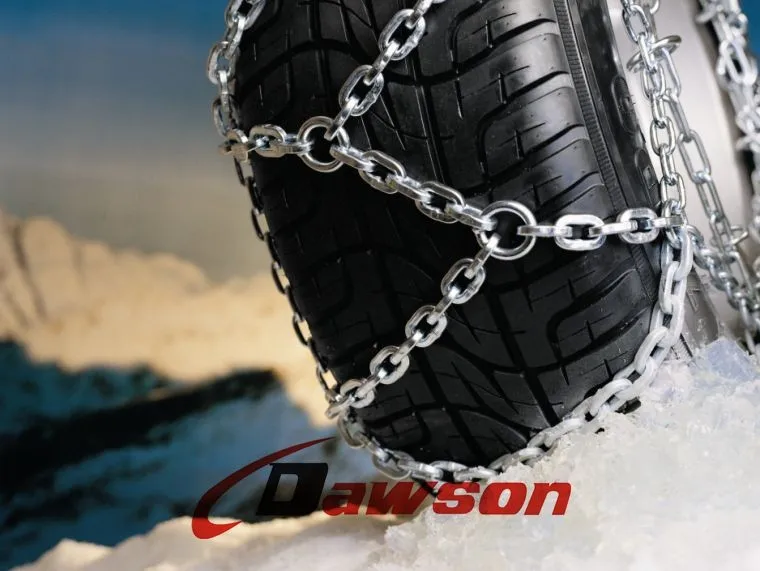
Drive Forward Slightly. The next step is to drive forward about 15 feet, or a full car length. This gives the chains a chance to relax and settle on your tires.
Re-tighten Chains. To take up any slack, unhook the rubber end of the red draw chain and pull it tight again. Once it’s tight, guide the red chain through the loops and, again, securely latch the bungee end to the gold-side chain.
The chains should be tight on the tire. And, be sure to stop if you hear them making any contact with your vehicle. If your chains are still loose, unhook the bungee and adjust the red hook straight across from the chain guide. Unhook and reattach to the tightest position on one of the three gold chain links. It’s okay if the extra links are hanging loosely. Now, you’re ready to reattach your bungee.
While driving with tire chains, listen for a loud sound of slapping, or metal on metal.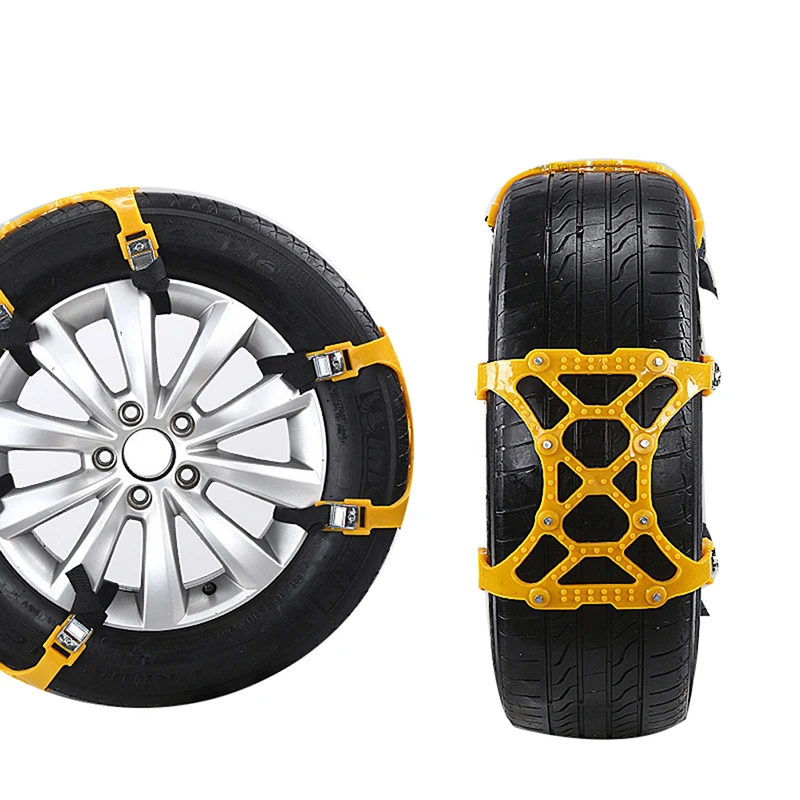 If you hear any indication that a chain may be broken or hitting your car, STOP as soon as safely possible. Loose or broken chains that flap can wrap around a strut or shock component, causing big damage to your vehicle. To help prevent damage, here are a few tips for driving when you have winter chains installed on your vehicle.
If you hear any indication that a chain may be broken or hitting your car, STOP as soon as safely possible. Loose or broken chains that flap can wrap around a strut or shock component, causing big damage to your vehicle. To help prevent damage, here are a few tips for driving when you have winter chains installed on your vehicle.
Pull over in a safe location and remove the chains. Start by unhooking the bungee and chain from the guide, removing them from the tensioner. Unlatch the red hook, and then undo the blue and yellow cable connection. Once all of your chains are off and lying flat on the ground, pull backward or forward slowly a few feet so you can safely pick them up.
At the end of your trip, lay your chains out in the garage and let them dry.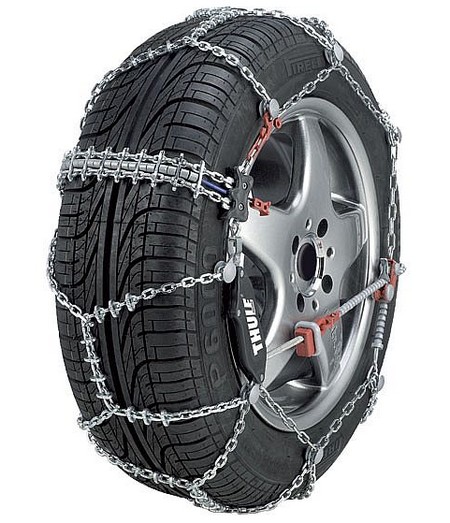 If you pack them wet, they can rust.
If you pack them wet, they can rust.
Also check them for wear, especially if you’ve driven them on asphalt for any distance. Look for flat spots, and replace the chains if you find some.
Link at left shows flattening from wear. Link in center shows sharp edge from wear that can damage a tire.
Remember, if you don’t use your chains all winter long, you can return them with proof of purchase to any Les Schwab for a full refund in the spring.
Get your next set of Quick-Fit chains, along with a few tips on how to install them, at your local Les Schwab, where doing the right thing matters.
Want more tips on winter road safety? See 19 Winter Driving Resources You Can’t Do Without.
Get More Winter Tips
Chains are an alternative to studded tires, providing a more stable and reliable ride in harsh winters. However, you need to know when you can wear them and how to move with them.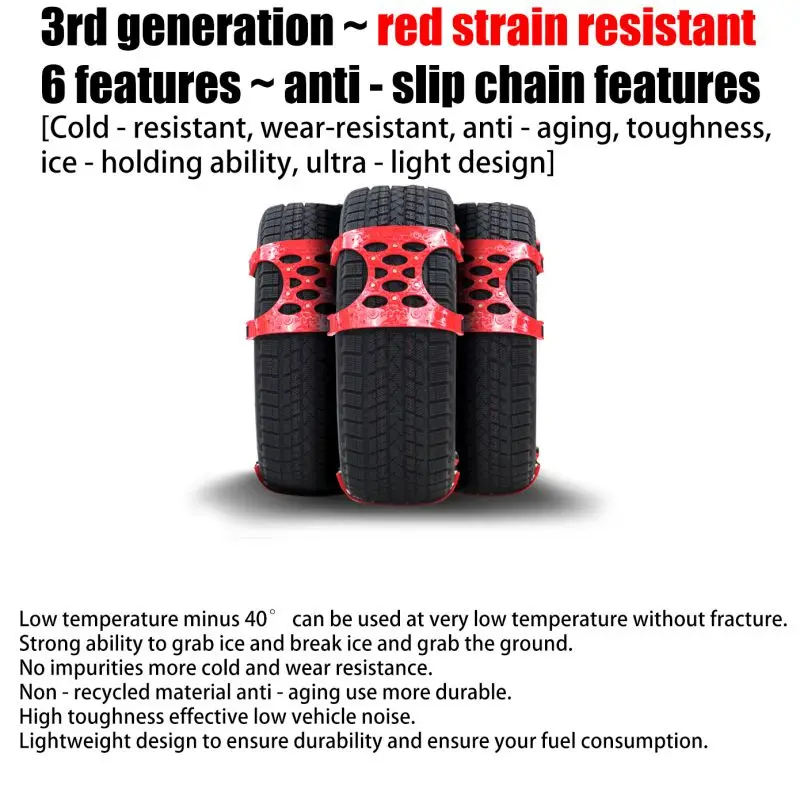 Here we have prepared some tips for people planning to buy snow chains.
Here we have prepared some tips for people planning to buy snow chains.
Studded winter tires date from the post-war years. Manufacturers then outdid themselves with solutions that would make driving easier in difficult conditions. Tires Nokian with studs in 1961 belonged to one of the first models of this type. Although many years have passed, manufacturers are still working on the retractable studded tire project. A winter tire is ideal for rallying, but in everyday use it is destructive to the pavement. Therefore, it is not surprising that studded tires have become banned in most countries. An alternative is chains for automobile wheels, the use of which is regulated by the Road Signs and Signals Ordinance. Snow chains in Russia can be used on snowy or icy surfaces after a warning sign with a snowflake symbol. In many European countries, including France or Italy, riding on chains is mandatory for citizens and tourists after sign C-18 (tires with chains tensioned).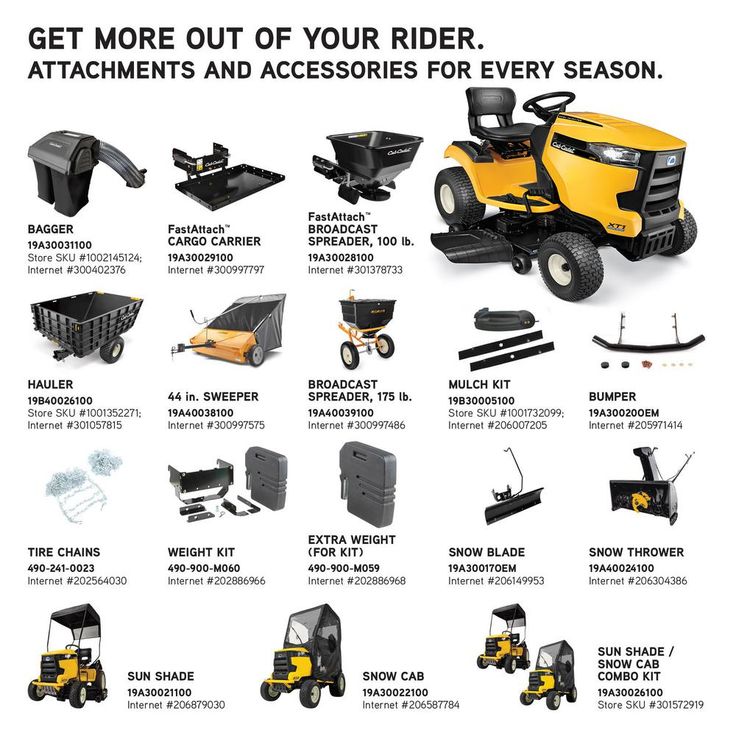 When planning a trip in the winter, it is worth equipping yourself with car chains so that you can put them on at the right time and thus avoid problems. An exception from the Old Continent is the Netherlands, where chains cannot be used. Put chains on wheels.
When planning a trip in the winter, it is worth equipping yourself with car chains so that you can put them on at the right time and thus avoid problems. An exception from the Old Continent is the Netherlands, where chains cannot be used. Put chains on wheels.
Snow chains for wheels are also snow chains that are commonly used on the road when road and weather conditions become very difficult.

Before purchasing chains, check your vehicle's owner's manual to see if the manufacturer allows them to be used, and if so, what parameters they should have. It depends mainly on the amount of space between the tire and the wheel arch of the car. A bad choice can cause damage to the car, so you must also take into account the dimensions of the currently installed tires and rim. Also make sure the model protects the wheels from scratches - especially aluminum. Manufacturers offer many different models. Snow chains for wheels can be easily selected according to our needs and expected frequency of use. One of the main differences between the models is the assembly method. We can choose chains with a manual tensioner, which should be tightened after passing the first meters. The second option is an automatic tensioner, which automatically tensions the chain onto the bar while driving. You can also easily find chains mounted on the outside of the wheel.
Manufacturers offer many different models. Snow chains for wheels can be easily selected according to our needs and expected frequency of use. One of the main differences between the models is the assembly method. We can choose chains with a manual tensioner, which should be tightened after passing the first meters. The second option is an automatic tensioner, which automatically tensions the chain onto the bar while driving. You can also easily find chains mounted on the outside of the wheel.
It is rather difficult to travel by car in off-road conditions. On the way, the vehicle can meet not only mud and viscous soil, but also a large amount of snow masses and a slippery surface. In winter, it’s difficult to cope with driving on such a road and not get stuck.
However, you don't have to drive a tractor to get to your destination. You can also do this in a car. But for this it is recommended to install anti-slip chains on its wheels. With the help of these accessories, it is really possible to get out of the most seemingly hopeless situations. After all, sometimes even rubber with spikes can not provide normal grip.
After all, sometimes even rubber with spikes can not provide normal grip.
Regardless of the structure of the road surface, the anti-skid chains will create a normal adhesion of the wheels to the road surface. While studded tires often cannot drive on ice or get out of a mud hole.
Anti-slip chains are available in various materials. In addition, they have different sizes and designs themselves. For example, for driving on slippery roads, it is best to choose chains with small links. But for moving through mud or snow, it is worth installing chains with large links.
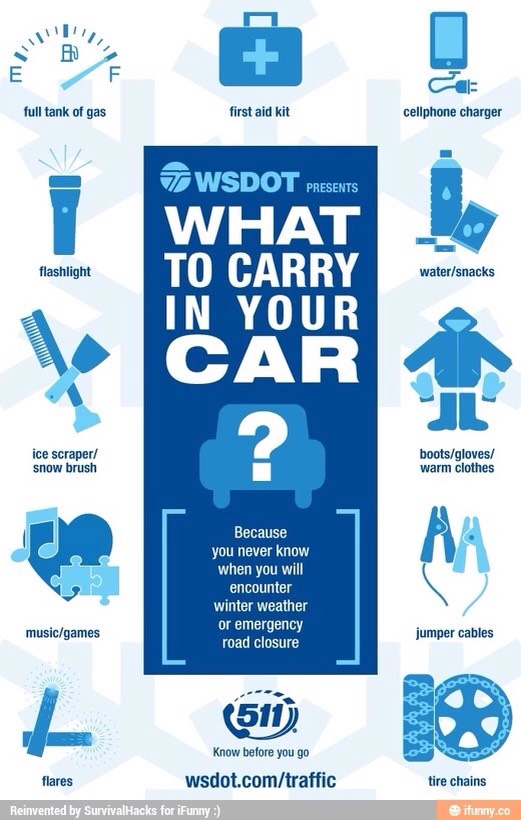 With such chains, it is allowed to drive at a speed of 80-90 km / h. They are put on wheels to overcome both hard and soft surfaces. Rubber chains
With such chains, it is allowed to drive at a speed of 80-90 km / h. They are put on wheels to overcome both hard and soft surfaces. Rubber chains When choosing anti-slip chains, it is necessary to take into account the width of the rubber tread and its size. All anti-slip chains have special lugs, with which they are well fixed on the surface.
In conclusion, it is worth noting that it is best to buy domestically produced anti-slip chains. As for foreign manufacturers, such products often have poor quality locks and plastic braids.
Ideally, manufacturers should prepare universal snow chains. However, you should agree on other ideas that can also improve your safety while driving in difficult winter conditions. One alternative is liquid snow chains. This is a mixture of polymers, which, after a light and quick application to the tire, increases grip on ice several times. Smooth, non-slip chains on wheels may not work well in snowdrifts. It turns out that not only a thick steel chain can support us in winter. Manufacturers also use composite. Another solution is snow chains, commonly known as snow socks. They are made from steel-reinforced material and are therefore thinner and slightly more versatile than traditional chains. However, they are less effective, especially on fresh snow.
One alternative is liquid snow chains. This is a mixture of polymers, which, after a light and quick application to the tire, increases grip on ice several times. Smooth, non-slip chains on wheels may not work well in snowdrifts. It turns out that not only a thick steel chain can support us in winter. Manufacturers also use composite. Another solution is snow chains, commonly known as snow socks. They are made from steel-reinforced material and are therefore thinner and slightly more versatile than traditional chains. However, they are less effective, especially on fresh snow.
Have you ever used car or truck tire chains? Write in the comments where and under what conditions it was!
1. Marking chains for chainsaws by pitch.
The very first step in choosing a chainsaw chain is to understand what type you need. The main criterion for classifying chains is marking relative to the pitch.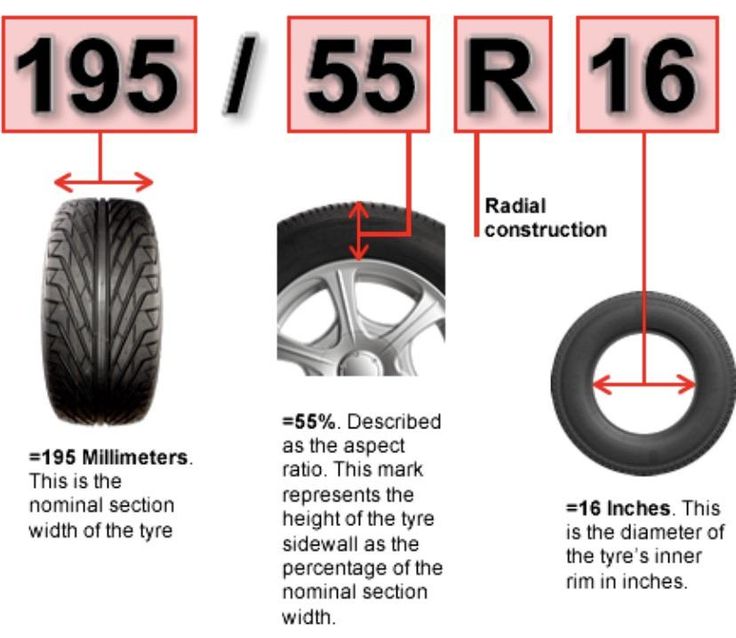 Chain pitch is the distance between the nearest teeth (tails) or between three chain rivets. It is measured in inches and the most popular sizes are: 0.325; 0.375 and 0.404 inches. Each type is designed for different needs, and the choice here may come down to simply reading the instructions for your chainsaw. After all, each saw is immediately developed for a certain step, and only professional saws can work with all three types, depending on the place of work. To better understand these types, let's look at them separately.
Chain pitch is the distance between the nearest teeth (tails) or between three chain rivets. It is measured in inches and the most popular sizes are: 0.325; 0.375 and 0.404 inches. Each type is designed for different needs, and the choice here may come down to simply reading the instructions for your chainsaw. After all, each saw is immediately developed for a certain step, and only professional saws can work with all three types, depending on the place of work. To better understand these types, let's look at them separately.
Before we start, let's say one more important point: each type of chain is designed for certain chainsaw power and torque. After all, the smaller the step, the lower the productivity of the chain and less effort is needed to move it along the wood. And the larger the step, the higher the productivity and the more power is needed to work. In addition, the pitch affects the so-called "aggressiveness" of the saw. It means not only performance, but also ease of management. In simple terms, the larger the pitch, the more the chain "tear" the wood, which means that it requires more human effort to hold the tool. In addition, a larger chain pitch means that the dimensions of the links are larger, which means that the cut will be wider, which similarly requires a large power consumption of the tool. Therefore, buying a chain with a large pitch for a low-power chainsaw is not at all practical, this can simply “kill” the saw. Think! And we smoothly proceed to the consideration of specific dimensions.
In simple terms, the larger the pitch, the more the chain "tear" the wood, which means that it requires more human effort to hold the tool. In addition, a larger chain pitch means that the dimensions of the links are larger, which means that the cut will be wider, which similarly requires a large power consumption of the tool. Therefore, buying a chain with a large pitch for a low-power chainsaw is not at all practical, this can simply “kill” the saw. Think! And we smoothly proceed to the consideration of specific dimensions.
Chain pitch.
1.1. Chain 0.325.
This is the smallest size listed and often the most common. After all, household and semi-professional, low-power chainsaws, the most popular among the people, and this chain is just for them. The recommended power for the chain is 0.325 - 3 liters. With. or not more than 3.5 liters. With. If your chainsaw is more powerful, you might want to consider a 0. 375" chain. But everything still depends on the tree and the place of work. If the saw is used for delimbing and felling thin trees or construction work, then 0.325" would be more appropriate. This chain makes the work smoother, more comfortable, it doesn’t “tear” the wood so much at the beginning of the cut. And for a person, as well as an engine, such work for these purposes is more appropriate.
375" chain. But everything still depends on the tree and the place of work. If the saw is used for delimbing and felling thin trees or construction work, then 0.325" would be more appropriate. This chain makes the work smoother, more comfortable, it doesn’t “tear” the wood so much at the beginning of the cut. And for a person, as well as an engine, such work for these purposes is more appropriate.
1.2. Chain 0.375 or 3/8.
Why did we write two numbers? It's simple, if 3 divided by 8 we get 0.375. And the parameter in the form of a fraction 3/8 is very often used for marking. The reason is ordinary, so as not to confuse the numbers 0.325 and 0.375, so we are not surprised if the chain at 0.375 is hard to find, it is better to look for the 3/8 marker right away.
The chain marked 0.375 is less popular with the 0.325 brand and is used on 4 hp chainsaws. With. Such a chain is already used on felling relatively thin trees and for cutting wood of medium thickness. For its group of non-professional and professional types of saws, this is the most optimal size.
For its group of non-professional and professional types of saws, this is the most optimal size.
1.3. Chain 0.404.
Chain 0.404 is used only on professional saws. The power of the tool for working with such a chain must be at least 5.5 liters. With. Only in this way will the chainsaw be able to show all its qualities as a high-speed powerful tool. And with such a chain it is already possible to saw and cut down huge trees with ease. From this it is also clear that for weak saws it is not cost-effective to use a 0.404 chain. In addition, chainsaws for a 0.404 chain are characterized by increased torque, without which it will be difficult for both the person and the tool to work with such a step.
It's easy to sum it up now. The main selection criterion is indicated - this is the marking relative to the step. It is not difficult to understand what is needed in this regard, it is enough to open the instructions for your chainsaw or simply compare the power with respect to the above information. But do not forget one more important point - the chain pitch must match the pitch of the drive and driven sprockets (the driven one is often part of the tire). That is, if your saw is designed for size 0.325, then installing a 3/8 chain will not be so easy. Together with a chain of a new size, you need to buy both a new drive sprocket and a new tire, otherwise it will really be impossible to work (again, impossible due to the difference in the pitch of the sprockets). And finally, we have listed three types of chains in relation to the pitch, but there are actually five of them (another 1/4 and 3/4, that is, 0.25 and 0.75 inches, respectively), but due to their low popularity, especially in life, we will keep silent about the other two types.
But do not forget one more important point - the chain pitch must match the pitch of the drive and driven sprockets (the driven one is often part of the tire). That is, if your saw is designed for size 0.325, then installing a 3/8 chain will not be so easy. Together with a chain of a new size, you need to buy both a new drive sprocket and a new tire, otherwise it will really be impossible to work (again, impossible due to the difference in the pitch of the sprockets). And finally, we have listed three types of chains in relation to the pitch, but there are actually five of them (another 1/4 and 3/4, that is, 0.25 and 0.75 inches, respectively), but due to their low popularity, especially in life, we will keep silent about the other two types.
Now let's move on to other important questions in order to learn how to choose a chain for a chainsaw as correctly as possible and understand this topic professionally.
2. Classification of chainsaw chains according to the thickness of the tail.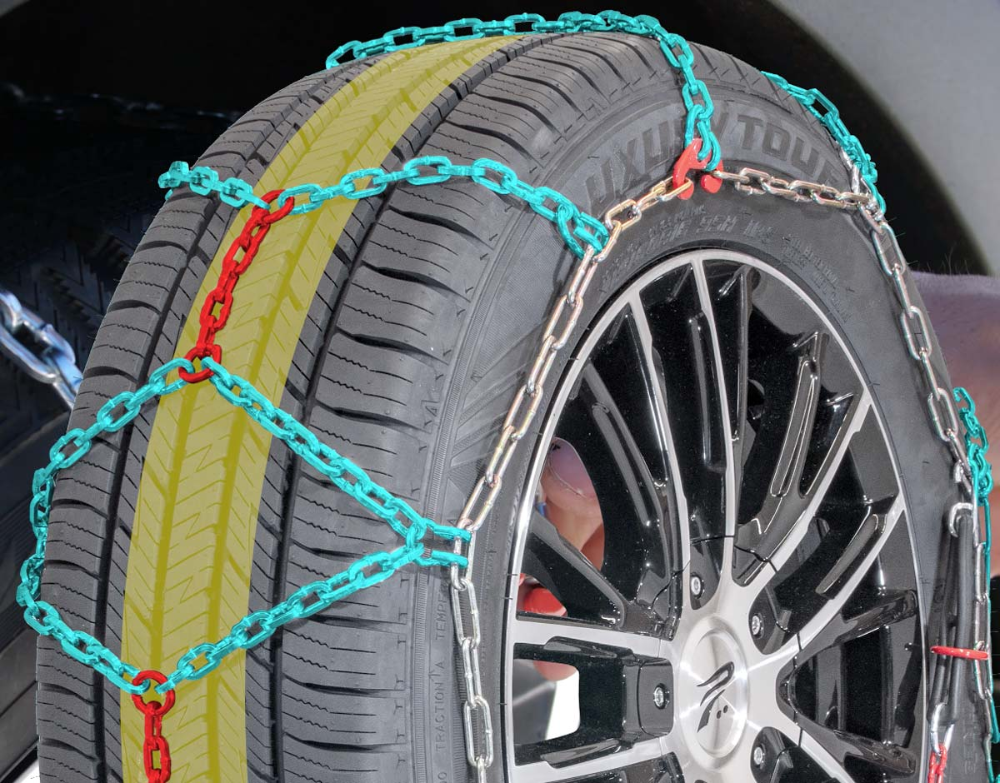
The thickness of the tail, or more precisely the thickness of the drive link, is the second parameter of the saw chain characteristics. Many may not realize, but the groove on the tire has a different width in different chainsaws, similarly, the drive links are designed for different tires. They are characterized by five sizes: 1.1 mm, 1.3 mm, 1.5 mm, 1.6 mm and 2 mm (0.043”, 0.05”, 0.058”, 0.063” and 0.08”, respectively). Let's consider each separately.
Drive link thickness.
2.1. 1.1 mm (0.043”).
This is the bare minimum and such miniature chains are used only on low-power household saws. For loads and hard work, such a chain is not designed.
2.2. 1.3 mm (0.05”).
This size, although not too different from the first, is able to withstand heavy loads. And it is this type of chain that is the most popular in the world. Chains with a 1.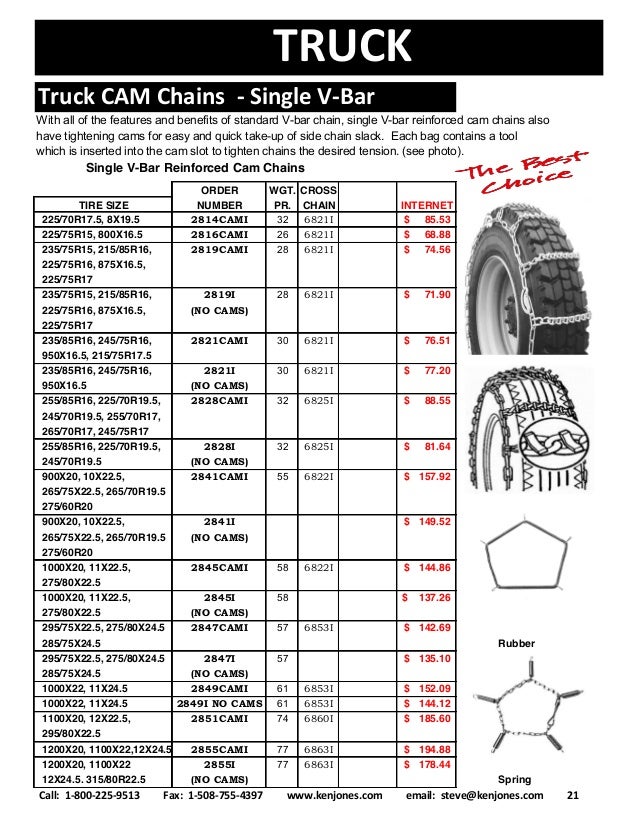 3 mm tail are used not only on high-quality reliable household chainsaws, but even on semi-professional devices. Such chains are light and reliable at the same time, and most likely, the reader will have to choose this particular type.
3 mm tail are used not only on high-quality reliable household chainsaws, but even on semi-professional devices. Such chains are light and reliable at the same time, and most likely, the reader will have to choose this particular type.
2.3. 1.5 mm (0.058”).
The third type, which, along with the previous one, is very popular, but already on semi-professional and professional chainsaws.
2.4. 1.6 mm (0.063”).
Chains with a 1.6 mm drive link are stronger and therefore only used on professional tools.
2.5. 2 mm (0.08”).
And the last type, which allows you to use the chain for a long time under heavy loads. It is clear that it is possible to meet such a thickness only on powerful highly professional units.
The result of the second point is simple, the greater the thickness of the drive link, and accordingly, the wider the groove of the chainsaw bar, the higher the chain quality and able to withstand heavy loads. When choosing here, it is important to know only one thing - what tire is worth, or what width can be used on your chainsaw model. And when buying, they just check to buy the right type, otherwise it will not be possible to make a new purchase.
When choosing here, it is important to know only one thing - what tire is worth, or what width can be used on your chainsaw model. And when buying, they just check to buy the right type, otherwise it will not be possible to make a new purchase.
3. Depth of cut and chain profile height.
The third factor that characterizes the saw chain is the height of the profile, which indicates the depth of cut of the saw (it should be added that the size in height plays a role, but the depth of cut is the main parameter). The higher the profile, the deeper the chain “takes”, which means higher performance. The smaller the profile, the thinner the chips are removed, that is, the chain does not bite deep into the wood. This depth can be adjusted by grinding the stops located at each cutter, but in the new chain these dimensions already have a certain type. There are two types of profile: 0.025” (0.635 mm) low profile chain and 0.03” (0.762 mm) high profile chain. This information should also be written in the characteristics of the saw (often they simply indicate the brands of chains that fit, but they already correspond to the desired size). The choice here is not great, this information is given more for review. Indeed, when sharpening chains on your own, you need to know the type of profile in order to bring them into the appropriate form when sharpening the limiters. But at their core, both types are divided into professional and amateur chainsaw profiles. True, there are nuances here. Professional chainsaws do not always have high-profile chains, but household chainsaws are always equipped with low-profile options. And if everything is clear with the low profile types, then the high profile requires clarification. After all, it makes the chain highly productive, which means it increases the vibration and aggressiveness of the chain, as already mentioned. And strong vibration will not allow you to work with the saw for long hours at the logging site.
This information should also be written in the characteristics of the saw (often they simply indicate the brands of chains that fit, but they already correspond to the desired size). The choice here is not great, this information is given more for review. Indeed, when sharpening chains on your own, you need to know the type of profile in order to bring them into the appropriate form when sharpening the limiters. But at their core, both types are divided into professional and amateur chainsaw profiles. True, there are nuances here. Professional chainsaws do not always have high-profile chains, but household chainsaws are always equipped with low-profile options. And if everything is clear with the low profile types, then the high profile requires clarification. After all, it makes the chain highly productive, which means it increases the vibration and aggressiveness of the chain, as already mentioned. And strong vibration will not allow you to work with the saw for long hours at the logging site. This is where the developers did some kind of trick, they take into account the chain pitch in order to maintain low aggressiveness. After all, if the step is large (and this entails vibration) and the profile is high (this is also increased vibration), then in the end the saw, although it will cut quickly, will simply become inconvenient for long-term work. And this balance is maintained by choosing not the two most effective parameters, but by alternating them. That is, if the step is large, the profile is low, if the step is smaller, you can make a high profile. This balancing allows the chainsaw to work less aggressively and efficiently at the same time. But it’s difficult to say which chain is better (with a large profile and a small pitch or a small profile and a maximum pitch), it all depends on the wood, working conditions, and everything is individual for each case, you just need to try.
This is where the developers did some kind of trick, they take into account the chain pitch in order to maintain low aggressiveness. After all, if the step is large (and this entails vibration) and the profile is high (this is also increased vibration), then in the end the saw, although it will cut quickly, will simply become inconvenient for long-term work. And this balance is maintained by choosing not the two most effective parameters, but by alternating them. That is, if the step is large, the profile is low, if the step is smaller, you can make a high profile. This balancing allows the chainsaw to work less aggressively and efficiently at the same time. But it’s difficult to say which chain is better (with a large profile and a small pitch or a small profile and a maximum pitch), it all depends on the wood, working conditions, and everything is individual for each case, you just need to try.
Depth of cut is the main characteristic of the saw profile.
We also note that when felling large trees, highly professional saws use chains with a large pitch and a high profile, since speed is extremely important here.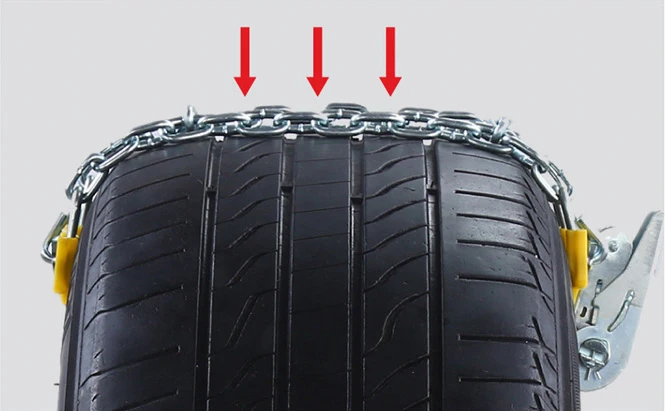 It happens that the profile is produced even more sounded, even 0.07” (1.778 mm), but this is extremely rare and is often used on machine units for felling.
It happens that the profile is produced even more sounded, even 0.07” (1.778 mm), but this is extremely rare and is often used on machine units for felling.
In general, this entire item can be attributed to the professional use of serious chainsaws. For an ordinary user, this parameter is important only in one case, when the saw is sharpened at home. You can cut the depth limiters only with voiced knowledge, otherwise your household chainsaw will not cut at all and will definitely get tired of high loads.
4. Chain length, bars, number of teeth.
It is not worth dwelling on the chain length parameter, it does not carry any important classifications. There are chainsaws with a long tire, and there are with a short one. Everything is directly proportional to the power of the saw, and for what work the tire is designed. The main thing is to understand what step is needed to select a chain and how many links (or rather, the number of tails) should be. Although, some sellers characterize chains with cutting teeth, and there are half as many of them. As for the length of the bar, it will always be clear by itself and you shouldn’t especially remember it (although you can tell the seller the brand of the saw and the length of the bar, they will also easily compare the size with such data). Here the most important thing in considering these characteristics is to understand that each chainsaw is designed for its own type of chain, and putting a longer tire is always contraindicated. Therefore, we never increase the size, nor do we reduce it (we don’t think that a shorter chain will give less load and that’s good, no, by doing this we are already starting to harm the saw set), for each power we have our own size and you can never deviate from these numbers to one side or the other. And if there are small opportunities to change the length of the bus, all this is mandatory spelled out in the technical specifications.
Although, some sellers characterize chains with cutting teeth, and there are half as many of them. As for the length of the bar, it will always be clear by itself and you shouldn’t especially remember it (although you can tell the seller the brand of the saw and the length of the bar, they will also easily compare the size with such data). Here the most important thing in considering these characteristics is to understand that each chainsaw is designed for its own type of chain, and putting a longer tire is always contraindicated. Therefore, we never increase the size, nor do we reduce it (we don’t think that a shorter chain will give less load and that’s good, no, by doing this we are already starting to harm the saw set), for each power we have our own size and you can never deviate from these numbers to one side or the other. And if there are small opportunities to change the length of the bus, all this is mandatory spelled out in the technical specifications.
5. Types of cutting links.
Types of cutting links.
Classification of chains according to the profile of the cutting link.
Again we will speak from a professional point of view, so those who want to buy a chain for a household chainsaw, and not a professional chainsaw, can optionally skip some points. So, consider another professional term - the type of cutting link. There are many different types of cutting links regarding their shape, but only two main ones can be distinguished from them: chisel and chipper types. For each saw and each work choose the best option. Let's consider each separately.
5.1. Chisel type cutting link.
Chisel type, "seven".
If you look closely at the drawing, we see what shape the chisel profile carries. In the context, it resembles the number seven, which gave it the popular name "seven". This profile is considered the most optimal for fast and high-quality work.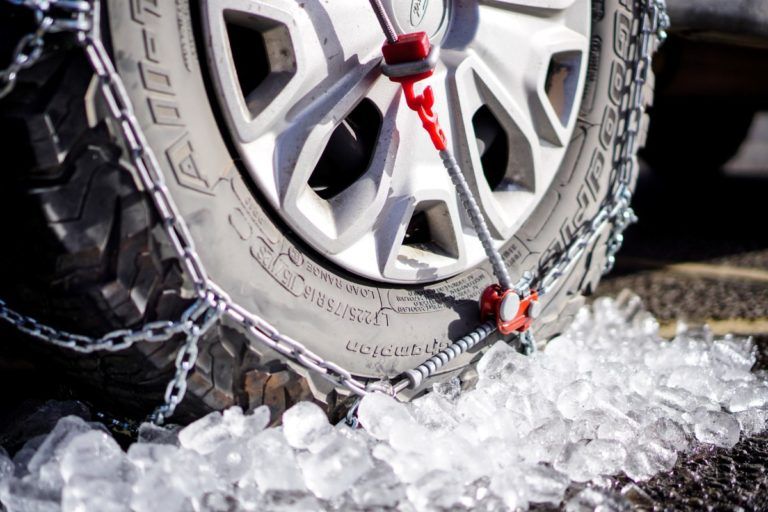 After all, the entire working surface is strictly straight and cuts evenly into the wood. On professional saws, it is the chisel type that is most often found. But, as always, the best for work comes with a lot of negatives. The biggest disadvantage is the difficulty of sharpening these cutting links. And at the slightest deviation from the correct angles, the work completely loses all the advantage of the chisel. Another problem of such links is sensitivity to dirt, sand, which is always relevant when working with wood.
After all, the entire working surface is strictly straight and cuts evenly into the wood. On professional saws, it is the chisel type that is most often found. But, as always, the best for work comes with a lot of negatives. The biggest disadvantage is the difficulty of sharpening these cutting links. And at the slightest deviation from the correct angles, the work completely loses all the advantage of the chisel. Another problem of such links is sensitivity to dirt, sand, which is always relevant when working with wood.
5.2. Chipper type of cutting link.
Chipper, crescent type, chipper, sickle.
The chipper type, or chipper, is a completely different form. In the context, this type resembles a sickle, from which this profile received two more popular names - “sickle” and “sickle type”. It is clear that the contact area of such a link is larger than the plane, which leads to higher loads and worsens cutting performance, but there are also positives here.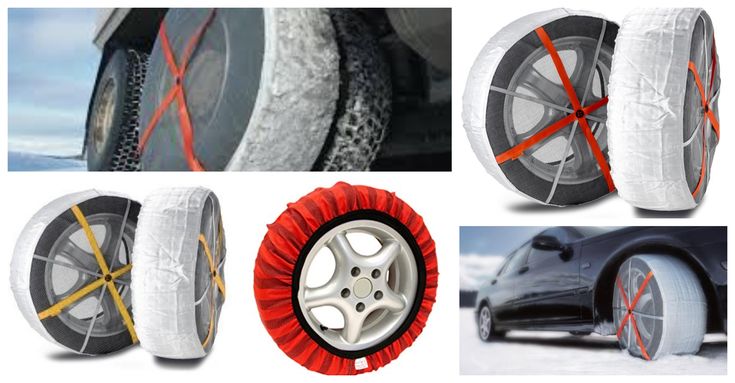 The chipper type of the link tolerates dirt much more easily, and when sharpening, it is not necessary to observe the angles too precisely.
The chipper type of the link tolerates dirt much more easily, and when sharpening, it is not necessary to observe the angles too precisely.
Now it remains to summarize what has been said about the profiles of the cutting links. As you can see, each type has its own advantages and disadvantages, so it is impossible to distinguish what is better and what is worse (although the chisel profile is inherently more effective). You just need to be based on the circumstances, the place of work, and already choose a chain for your chainsaw in relation to this. Many often use two types, because changing the chain is not so difficult. It’s only worth saying that these two types are the main ones, but there are also secondary ones that took something from one and something from another profile. And already operating with the whole range of profiles, you can easily choose the optimal one for the type of wood, and for air temperature, humidity and even the contamination of the place of work. We just wanted to point out one more characteristic that is important for chain selection.
We just wanted to point out one more characteristic that is important for chain selection.
6. About the sequence of links.
Chain cutting sequence.
This item could not have been voiced, but anything is found on the market and it is worth insuring yourself against unscrupulous goods when choosing a chain for a chainsaw. So, if we take any standard chain, then we will always have two tails (two leading links) for one cutting link. This is a standard and is followed by all chainsaw chain manufacturers. But you can find chains on the market where there are fewer cutting links, these are the so-called chains with a half pass and a pass. In the first case, one more additional connecting link is inserted into every second pair of cutting teeth. In the second case, an additional link is already installed between each cutting tooth. As a result, a standard chain with 64 leading links (tail) should have 32 cutting teeth, that is, 50%.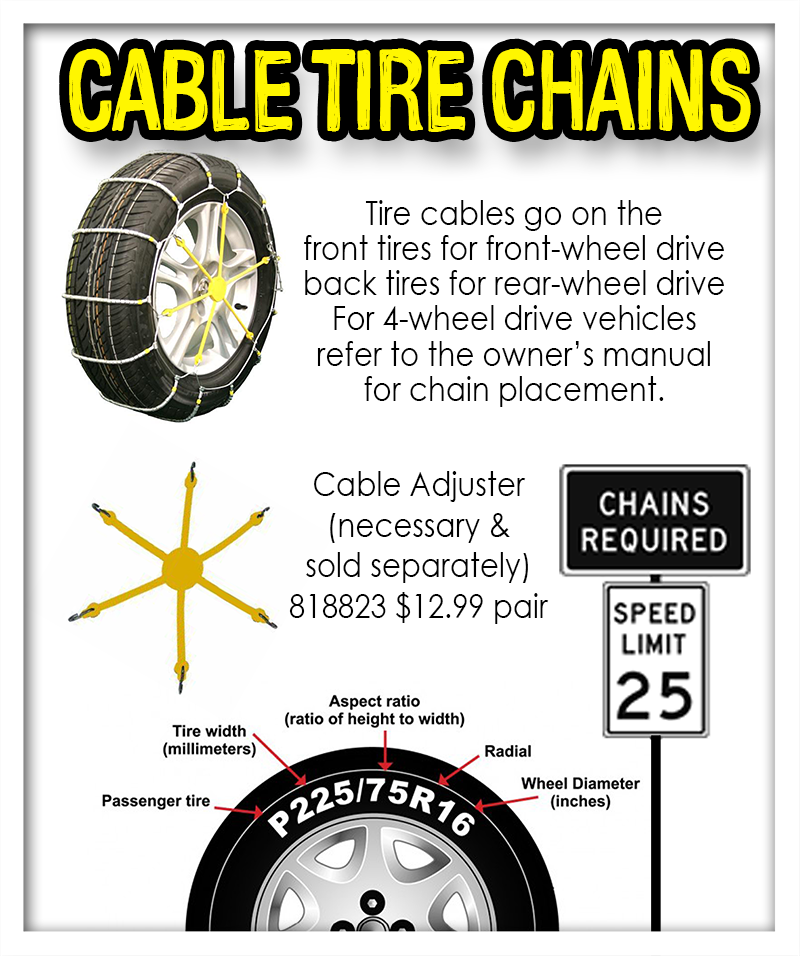 But in the case of a half pass, we will already get 40% of the working teeth, and with a pass - 37.5%. Now let's answer the main question, why make such chains? It's simple, only cutting teeth are valued in the chain, they are made using a special technology, they are coated and they are much more expensive than connecting links. And if you can’t make the chain shorter, then skipping the cutting elements can significantly reduce the cost of the chain itself. As a result, you can sell it cheaper and at the same time earn money on it. But there is only negative from such a chain, it makes the saw more aggressive, reduces its performance and even increases the wear of both the entire saw set and the chainsaw itself. It is not recommended to buy such a chain, its cheapness does not at all justify further repairs and work efficiency. In addition, no factory makes such chains, everything is made up at home from factory chains (at best), so it is clear that the build quality and durability of the chain itself is reduced several times.
But in the case of a half pass, we will already get 40% of the working teeth, and with a pass - 37.5%. Now let's answer the main question, why make such chains? It's simple, only cutting teeth are valued in the chain, they are made using a special technology, they are coated and they are much more expensive than connecting links. And if you can’t make the chain shorter, then skipping the cutting elements can significantly reduce the cost of the chain itself. As a result, you can sell it cheaper and at the same time earn money on it. But there is only negative from such a chain, it makes the saw more aggressive, reduces its performance and even increases the wear of both the entire saw set and the chainsaw itself. It is not recommended to buy such a chain, its cheapness does not at all justify further repairs and work efficiency. In addition, no factory makes such chains, everything is made up at home from factory chains (at best), so it is clear that the build quality and durability of the chain itself is reduced several times.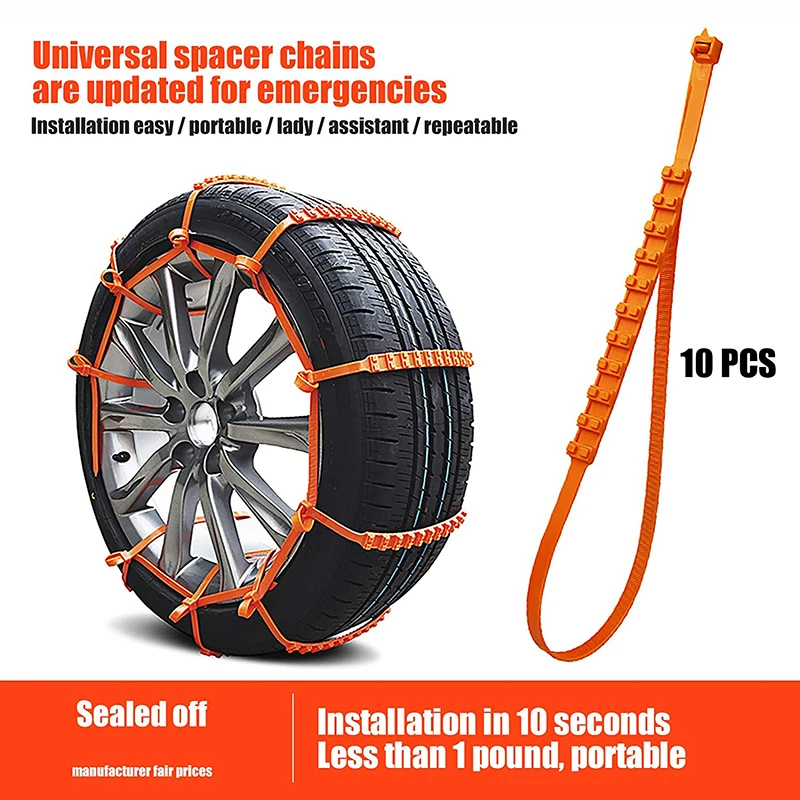 And when buying a chain on the market, we carefully study the sequence of links so as not to accidentally ruin our new device in such a popular way.
And when buying a chain on the market, we carefully study the sequence of links so as not to accidentally ruin our new device in such a popular way.
7. How and when to buy a new chain.
The first criterion and the main one, which fixes wear, is chain stretching to the limit. It is clear that, not being able to already carry out its tension, it is worth replacing the worn chain. But everything is not so simple here, this is not a bicycle when the chain is replaced like that. Here, the wear of the tire and the drive sprocket is increased due to design features, so the new chain on the old tire and sprocket will always feel uncomfortable, which will eventually lead to even more wear. According to the rules, the chain wears out 2-3 times faster than the bar and sprocket, so to increase the durability it is worth resorting to tricks. For example, you have a new chainsaw, you are going to work with it a lot and for a long time (if a saw is bought for five-minute work once a year, then one chain will last a lifetime).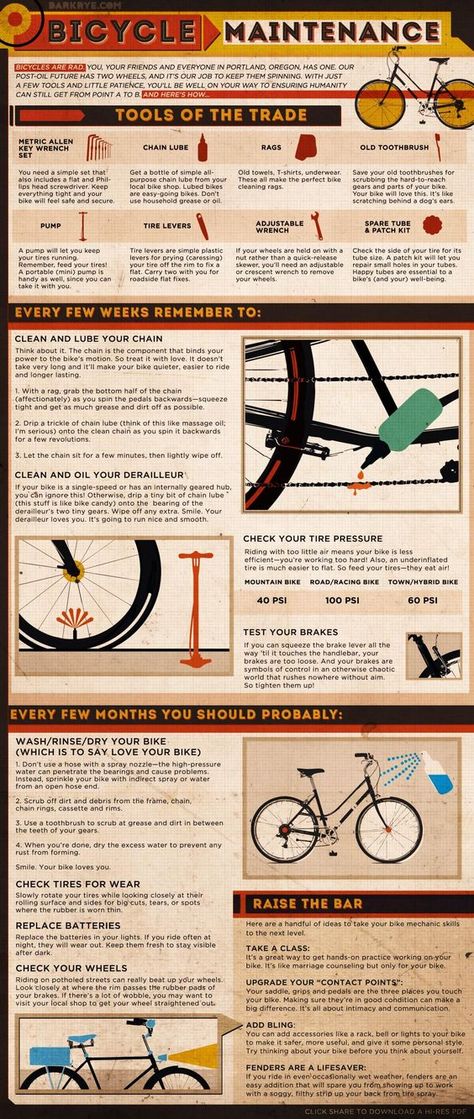 And in this case, we buy three chains at once for efficiency (it is possible with different pitches or with different types of cutting teeth relative to strength, if you have a professional tool). Further, after several hours of work with one chain, we make a replacement for another and so we constantly alternate the entire set (and do not forget to turn the tire over, it also requires uniform wear). As a result, all three chains will gradually stretch and grind at the same time as the tire and sprocket, and after the impossibility of stretching, it is already possible to safely change all the chains, the tire, and the drive sprocket. Believe me, with this approach, the gain in durability will be an order of magnitude higher than putting a new second chain on an already worn tire. In addition, a chain stretched almost to the limit will behave more quietly and more efficiently than a new one on an old tire and sprocket.
And in this case, we buy three chains at once for efficiency (it is possible with different pitches or with different types of cutting teeth relative to strength, if you have a professional tool). Further, after several hours of work with one chain, we make a replacement for another and so we constantly alternate the entire set (and do not forget to turn the tire over, it also requires uniform wear). As a result, all three chains will gradually stretch and grind at the same time as the tire and sprocket, and after the impossibility of stretching, it is already possible to safely change all the chains, the tire, and the drive sprocket. Believe me, with this approach, the gain in durability will be an order of magnitude higher than putting a new second chain on an already worn tire. In addition, a chain stretched almost to the limit will behave more quietly and more efficiently than a new one on an old tire and sprocket.
8. Longitudinal and transverse type.
Another important parameter is the classification of the chains in relation to the way the wood is cut. And if you delve into its essence, it becomes clear that we must have put it first, because it is very important. So why is he at the end?
And if you delve into its essence, it becomes clear that we must have put it first, because it is very important. So why is he at the end?
First, let's say what the longitudinal and transverse type of chains mean. It's simple, longitudinal type chains are designed for cutting wood along the fibers, transverse type chains - for cutting across. Masters understand that the difference in wood resistance in two cases is different and for working across - you don’t need an acute angle, but for working along - the tools are sharpened very sharply. For chain saws, these parameters are: 25-35 degrees - for cross cutting; 5-15 degrees - for a longitudinal cut. These characteristics can be read on the chain and even seen with the naked eye on the cutting teeth themselves. By the way, each tree also loves different angles, so it’s worth looking into these parameters separately if you work professionally with wood.
Cutter angle.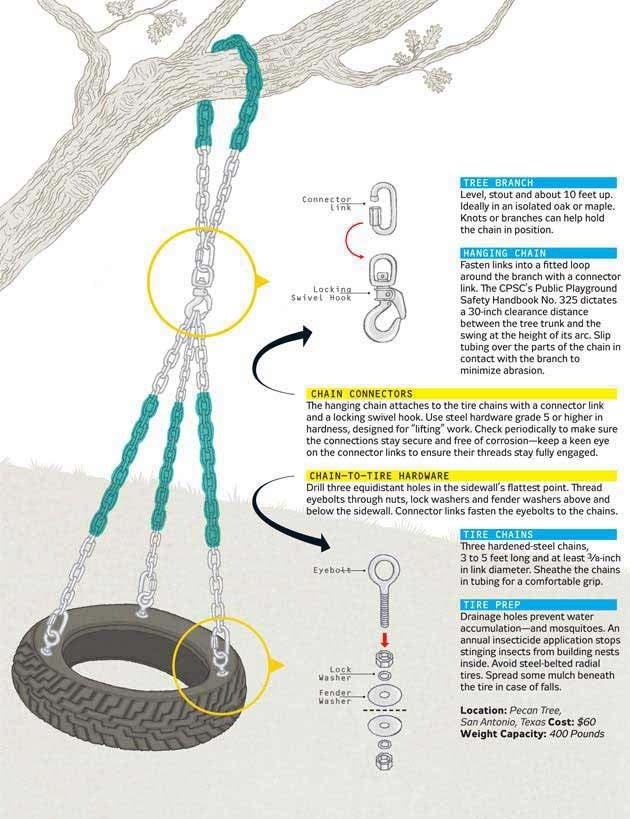
Now let's see why we left such an important parameter at the very end. Everything is trite, chainsaws are often used for cross cutting. If sawing along, then this is most often done with a circular saw, which is more efficient for this. And that is why the demand for chains of the longitudinal type is so scanty that the market is not particularly involved in their development. Therefore, even finding a longitudinal type chain on the market is very, very difficult. Most choose the transverse type, and it was for these reasons that we discarded it to the very, very end. And this was the last parameter for classifying chains for chainsaws.
Let's try to simplify a little everything that has been said for an ordinary person and reduce all the instructions to a few sentences that will help you choose a chain for a chainsaw without too much understanding of the essence of such a complex tool. For a household chainsaw (not a professional one), this approach will be relevant, and only professionals should re-read everything written again.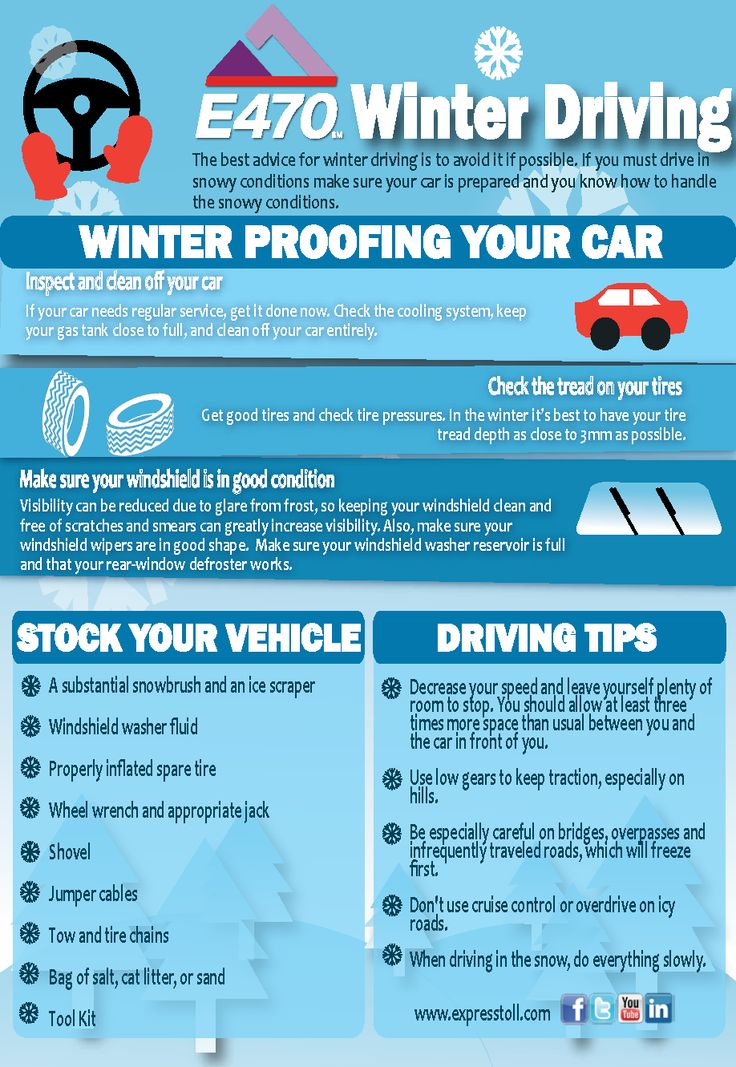 So, it’s worth starting the choice of a chain for a chainsaw from the disclosure of the instructions. If it is not there, we look for the model of our saw on the Internet and find all the important characteristics there. And in order to go buy a chain for your household tool, it is enough to write down the following: chainsaw brand (to buy a chain from the same manufacturer), the number of leading links (namely, leading, not cutting), the width of the groove of the tire (or the width of the leading link, tail) and the length of the tire (if we have the number of leading links, this can be discarded). Knowing all these parameters, we will definitely buy the right chain. If you know only the brand, you can suffer. After all, there are technological features of even well-known brands, where the sprocket, tire and chain are replaced for some reason with similar, but distinguishable types. And it is especially important to know all the indicated figures, if we saw cheap domestic production or from China (perhaps a fake brand), here it will not be difficult to buy a completely different chain, we see for ourselves, there are a lot of characteristics.
So, it’s worth starting the choice of a chain for a chainsaw from the disclosure of the instructions. If it is not there, we look for the model of our saw on the Internet and find all the important characteristics there. And in order to go buy a chain for your household tool, it is enough to write down the following: chainsaw brand (to buy a chain from the same manufacturer), the number of leading links (namely, leading, not cutting), the width of the groove of the tire (or the width of the leading link, tail) and the length of the tire (if we have the number of leading links, this can be discarded). Knowing all these parameters, we will definitely buy the right chain. If you know only the brand, you can suffer. After all, there are technological features of even well-known brands, where the sprocket, tire and chain are replaced for some reason with similar, but distinguishable types. And it is especially important to know all the indicated figures, if we saw cheap domestic production or from China (perhaps a fake brand), here it will not be difficult to buy a completely different chain, we see for ourselves, there are a lot of characteristics.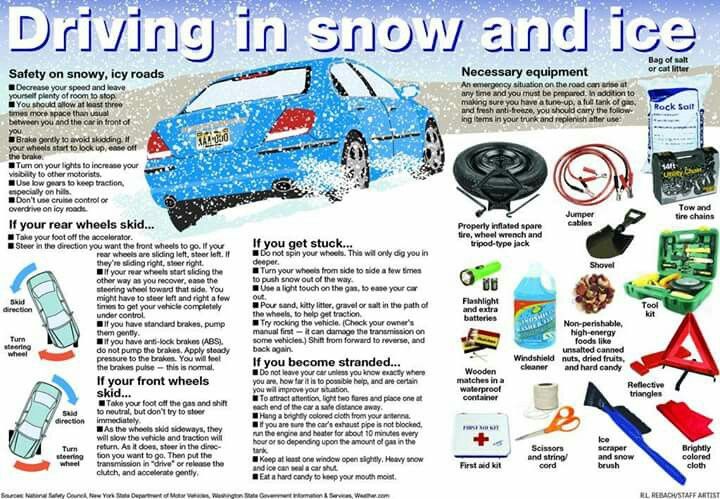 Be careful! And professionals should definitely re-read everything that has been said a few more times. Having penetrated into the essence, everyone will learn to understand everything stated as correctly as possible, which in the future will certainly help to make even a good chainsaw even more efficient and reliable.
Be careful! And professionals should definitely re-read everything that has been said a few more times. Having penetrated into the essence, everyone will learn to understand everything stated as correctly as possible, which in the future will certainly help to make even a good chainsaw even more efficient and reliable.
Always choose the right chain for your chainsaw!
In theory, we have already said everything that can be said about the chainsaw chain. If not all, then at least they covered the material quite significantly. Even professionals in this article can find a lot of useful information. True, it is worth recalling that we did not mention here the sharpening of the chain, its operational features, the correct tension, and this information is extremely important for durability. And having chosen the chain correctly, we will completely destroy all its qualities if we do not adhere to other rules. Therefore, we are studying additional material if you want to work with a chainsaw as efficiently as possible.